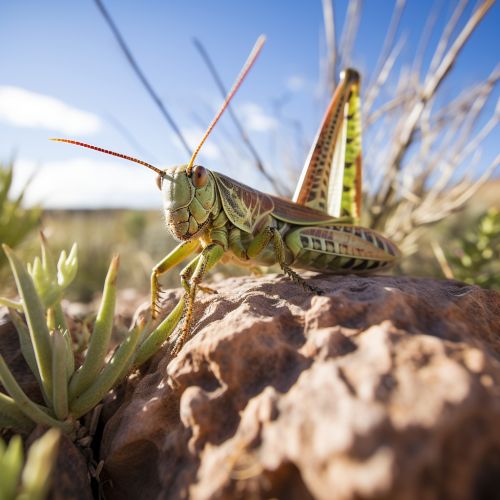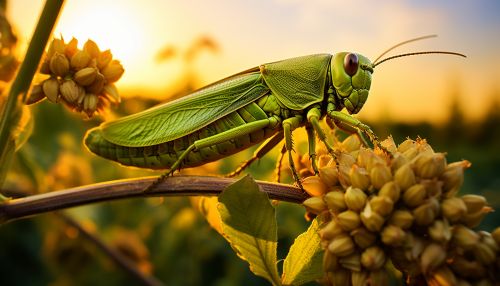Locust swarms
Introduction
Locust swarms are a phenomenon that has been recorded throughout history, causing significant impact on agriculture and economies worldwide. They are a collection of certain species of short-horned locusts that have a swarming phase. These insects are usually solitary, but under certain circumstances, they become more abundant and change their behaviour and habits, becoming gregarious.
Biology of Locusts
Locusts are part of the family Acrididae, which also includes grasshoppers. They are distinguished from grasshoppers by their ability to change their behaviour and habits at high population densities. The transformation from a solitary insect to a gregarious, swarming insect is triggered by the release of serotonin in response to the physical stimulation of locusts jostling each other.


Swarming Behaviour
Swarming behaviour is a response to overcrowding. Increased tactile stimulation of the hind legs causes an increase in levels of serotonin. This causes the locust to change colour, eat much more, and breed much more easily. The transformation is induced by several contacts per minute over a four-hour period. A solitary locust does not willingly move into a crowded area, but a swarming locust will actively seek out the company of other locusts.
Historical Impact
Locust swarms have had a significant impact throughout history. They have been mentioned in the Bible, the Quran, and in ancient Egyptian hieroglyphs. They have been known to cause severe famines and economic distress. For example, the 1931 locust plague in China was one of the deadliest in history, resulting in millions of deaths due to famine.
Modern Impact and Control
In modern times, locust swarms continue to pose a significant threat to agriculture, particularly in Africa, the Middle East, and Asia. The 2020 locust outbreak in East Africa was one of the worst in decades, affecting several countries including Kenya, Ethiopia, and Somalia.
Control measures for locust swarms typically involve the use of pesticides, either sprayed from aircraft or from the ground. However, these methods can have negative environmental impacts and there is ongoing research into more sustainable methods of control, such as the use of biological pesticides or locust-specific pathogens.
